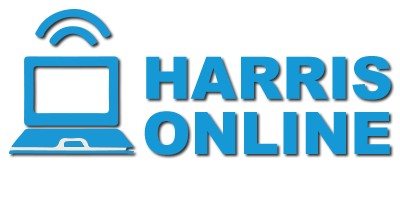This recent headline made me flash back to my days as a high school computer nerd: “NJ seeking help from COBOL programmers in coronavirus fight.“
COBOL is a computer programming language that was new on the scene in 1959. In the six decades since, lots of other coding languages have replaced it — except in old government mainframes, apparently. New Jersey is not alone in this problem. In many states, outdated software still runs services like unemployment insurance systems which have been overwhelmed by millions of newly-laid-off Americans victimized by the coronavirus.
Unfortunately, the software can’t be updated, because there aren’t enough people around who can still code in COBOL. Most who learned it in the 1960s and 1970s are either retired or have forgotten it. Or both.
I’m one of them.
When I was in high school, I spent too many hours after school in the computer room with my fellow nerds, and not just because it was the only place in the building with an air conditioner. The room wasn’t kept cool for the humans, but for the IBM 1620 computer that dominated the space. We wrote programs in the two most common programming languages of the day, FORTRAN and COBOL, and many of us became fluent.
We’d sit at keypunch stations and type our commands onto punch cards, which then had to be assembled in the right order and fed into the computer. Each card equalled one line of code, so it could take hundreds of cards per program, usually held together by a large rubber band, and stored on a shelf in the computer room’s closet. This insecure process guaranteed that at least once a week, one of the students would go to retrieve the cards they’d worked so diligently to compile, bump into something, and drop them — at which point we’d all have to stand still until they were retrieved and reassembled in the correct order.
We wrote programs of all sorts, some practical, some for fun. The kid who knew more than all the rest of us combined was named Monty. He was the one we’d turn to when we were stuck or needed help with a line of code. At one point, Monty wrote a highly advanced program that would have enabled the high school (and the whole district) to use the computer to compile and print report cards. We were all extremely impressed. So was the principal, who took it to the Superintendent of Schools and Board of Education. Unfortunately, none of them had ever seen a computer and were wary of anything they couldn’t understand. They were also concerned that students might manipulate the data to give themselves better grades. Monty argued that he’d designed it so that only teachers and administrators would be able to input the information. Besides, Monty wouldn’t have any need to change his own grades — he was a straight-A honor roll guy. But fear and ignorance won the day, as usual, and the school system had to wait a couple of decades before such innovation was welcomed.
The program I thought would be my pièce de résistance was an NBA game simulator. The IBM 1620 didn’t have any kind of display. Its only output option was a dot-matrix printer with the tractor-fed green-and-white paper that was ubiquitous at the time. My program, a simple early-70s version of the sort you’d find on any gaming platform today, allowed two “coaches” to pick their players. Then, using the computer’s random number generator, the IBM 1620 would run a simulation of a game, printing out the results of each shot and keeping score. It was pretty advanced for its time, but its biggest flaw was that the IBM 1620 wasn’t exactly state of the art technology at the time and didn’t really have a random number generator. Instead, it defaulted to a single digit every time, so it kept running the same play over and over again — the recipe for a very boring game of basketball, particularly since the final score was always the same.
Still, I enjoyed working on it and my other programs so much that, when it came time to apply to college, I only looked at schools with good computer science curricula. My goal was to be a Systems Analyst like my Uncle Irv, who held that title at NOAA, the government’s weather agency.
Unfortunately, when I got to the college of my choice, I ran into two little problems.
One was that everyone in the math and science programs had to take a weekly 3-hour physics lab. I was assigned to the class that started at 8am on Mondays. Having awakened much earlier than that for all my years in public school (and for summer jobs), I didn’t realize what an obstacle the time would be for someone living the dorm life. Even on the days when I woke up and got there on time, I sat bleary-eyed through the entire class, hating life.
Second was that the university’s computer science department insisted that its students use the PASCAL programming language. I complained to both my professor and the head of the department that FORTRAN and COBOL — the languages I was already very proficient in — were more widely used, but they told me that all first-year students had to learn PASCAL. No exceptions.
That’s when I made one of the most important decisions of my life. Instead of having a career as a Systems Analyst, I would become a Famous Radio Personality.
This decision was a double win. First, it didn’t require a physics prerequisite, so I dropped the Monday morning torture sessions. More importantly, over my next 4+ decades on the air, no one ever forced me to use a new language.

